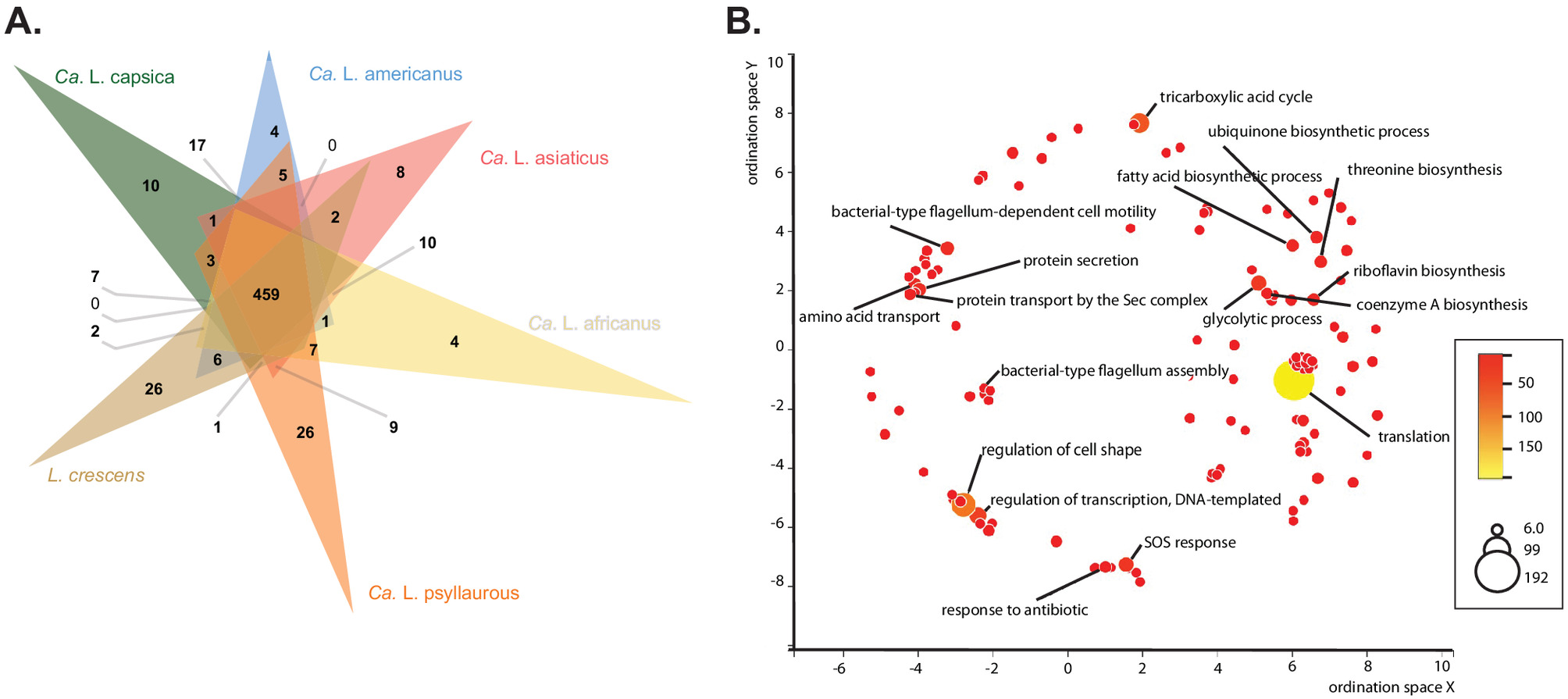柑橘類を破壊するバクテリアの親族も感染する可能性がある Citrus-destroying bacterial relative may also be infectious
2022-08-12 カリフォルニア大学リバーサイド校(UCR)
研究チームは、L. capsicaの遺伝子のうち、感染性の資質に関連するアミノ酸変異が急速に進化している21の遺伝子を特定した。
この遺伝子は、細菌が宿主である昆虫の体内に入り、DNAを取り込むための小さな「毛」のようなものである。そして、昆虫はその細菌を植物に感染させる。
<関連情報>
- https://news.ucr.edu/articles/2022/08/12/cousin-crop-killing-bacteria-mutating-rapidly
- https://journals.asm.org/doi/full/10.1128/spectrum.02091-22
最近同定されたリベリバクター属細菌に検出された多様な宿主-微生物相互作用および病原性タンパク質 Divergent Host-Microbe Interaction and Pathogenesis Proteins Detected in Recently Identified Liberibacter Species
Allison K. Hansen , Ariana N. Sanchez, Younghwan Kwak
Microbiology Spectrum Published:28 July 2022
DOI : https://doi.org/10.1128/spectrum.02091-22

ABSTRACT
Candidatus (Ca.) Liberibacter taxa are economically important bacterial plant pathogens that are not culturable; however, genome-enabled insights can help us develop a deeper understanding of their host-microbe interactions and evolution. The draft genome of a recently identified Liberibacter taxa, Ca. Liberibacter capsica, was curated and annotated here with a total draft genome size of 1.1 MB with 1,036 proteins, which is comparable to other Liberibacter species with complete genomes. A total of 459 orthologous clusters were identified among Ca. L. capsica, Ca. L. asiaticus, Ca. L. psyllaurous, Ca. L. americanus, Ca. L. africanus, and L. crescens, and these genes within these clusters consisted of housekeeping and environmental response functions. We estimated the rates of molecular evolution for each of the 443 one-to-one ortholog clusters and found that all Ca. L. capsica orthologous pairs were under purifying selection when the synonymous substitutions per synonymous site (dS) were not saturated. These results suggest that these genes are largely maintaining their conserved functions. We also identified the most divergent single-copy orthologous proteins in Ca. L. capsica by analyzing the ortholog pairs that represented the highest nonsynonymous substitutions per nonsynonymous site (dN) values for each pairwise comparison. From these analyses, we found that 21 proteins which are known to be involved in pathogenesis and host-microbe interactions, including the Tad pilus complex, were consistently divergent between Ca. L. capsica and the majority of other Liberibacter species. These results further our understanding of the evolutionary genetics of Ca. L. capsica and, more broadly, the evolution of Liberibacter.
IMPORTANCE “Candidatus” (Ca.) Liberibacter taxa are economically important plant pathogens vectored by insects; however, these host-dependent bacterial taxa are extremely difficult to study because they are unculturable. Recently, we identified a new Ca. Liberibacter lineage (Ca. Liberibacter capsica) from a rare insect metagenomic sample. In this current study, we report that the draft genome of Ca. Liberibacter capsica is similar in genome size and protein content compared to the other Ca. Liberibacter taxa. We provide evidence that many of their shared genes, which encode housekeeping and environmental response functions, are evolving under purifying selection, suggesting that these genes are maintaining similar functions. Our study also identifies 21 proteins that are rapidly evolving amino acid changes in Ca. Liberibacter capsica compared to the majority of other Liberibacter taxa. Many of these proteins represent key genes involved in Liberibacter-host interactions and pathogenesis and are valuable candidate genes for future studies.



